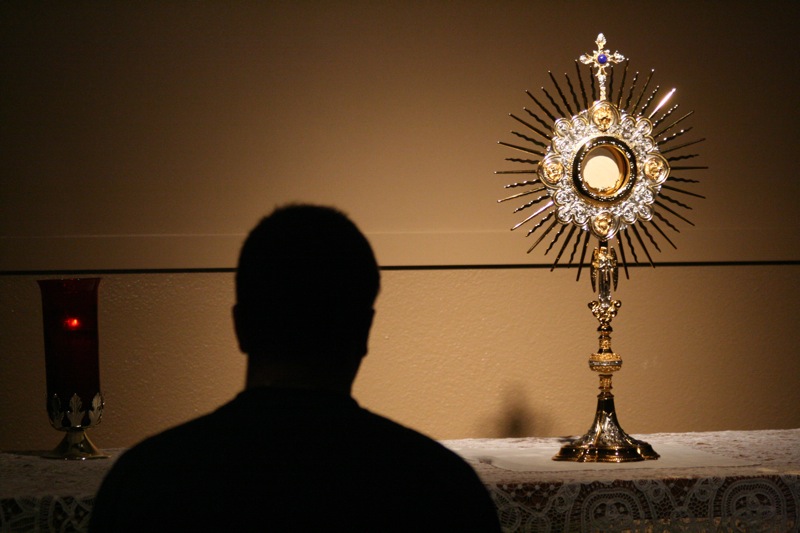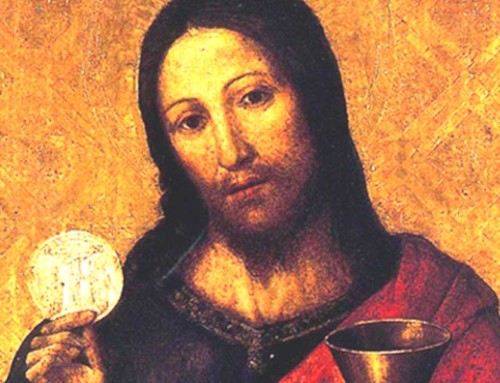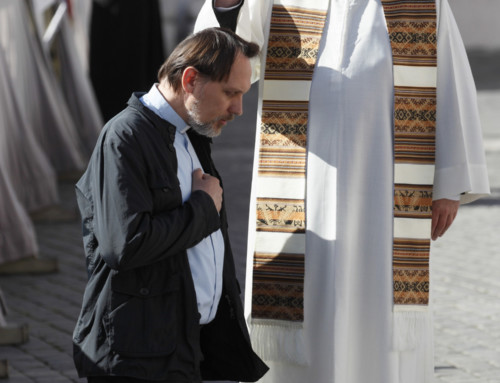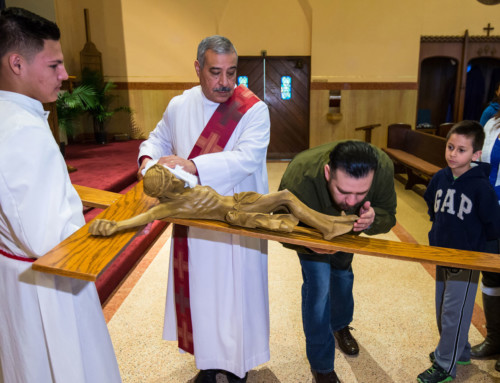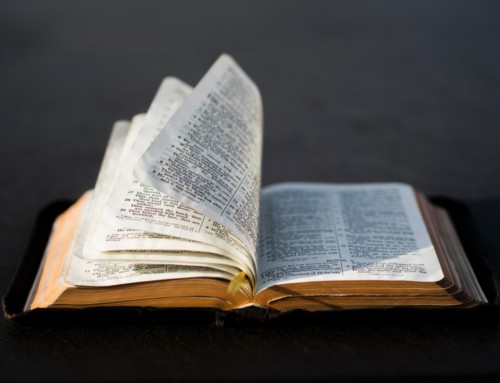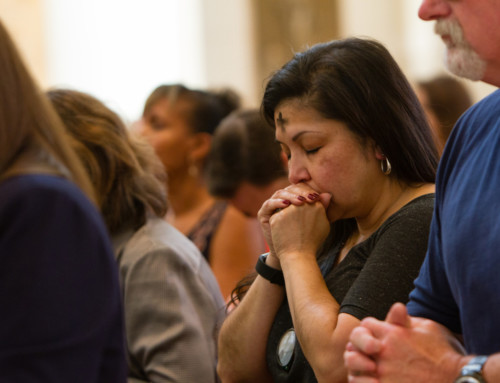This article was originally published on USCCB’s For Your Marriage website.
Eucharistic adoration is the practice of devout prayer before the body of Christ in the Eucharist, displayed outside of Mass. Once very widespread, it became less popular after the Second Vatican Council, which placed a greater emphasis on the active participation of the faithful in the liturgy itself. Although some liturgical theologians find Eucharistic adoration at odds with the purpose and practice of the Eucharist at Mass–that is to say, Communion–in recent years Eucharistic adoration has become more popular, particularly among younger Catholics.
The origins of Eucharistic adoration are not well-known. One of the first references to reserving the Blessed Sacrament for adoration is in the life of St. Basil the Great in the late fourth century. St. Basil supposedly divided the consecrated Eucharistic bread into three parts during the liturgy at his monastery. One part he consumed himself; the second was given to the monks; and the third portion was placed in a Golden Dove suspended above the altar. It seems likely that this reserved portion was kept for those who were unable to attend the liturgy because of illness or travel.
The practice of Eucharistic adoration among laypeople is thought to have begun in Avignon, France, on September 11, 1226. King Louis VII, having just won a victory over the Albigensians, asked that the Blessed Sacrament be placed on display at the Chapel of the Holy Cross. This exposition was so popular that the local bishop asked to have it continue indefinitely. Pope Honorius III gave his consent and the practice continued, nearly uninterrupted, until the French
Revolution in 1792.
The longest-running Eucharistic adoration in the United States is with the Franciscan Sisters of Perpetual Adoration in La Crosse, Wisconsin, who have been praying nonstop for more than 130 years.
Copyright © 2019 United States Conference of Catholic Bishops, Washington, D.C. Used with permission. All rights reserved.

